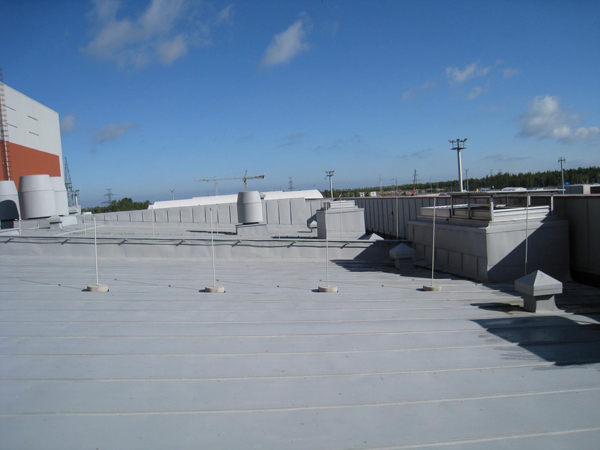Lightning protection used also in Olkiluoto
Lightning, thunder and heavy rain are common causes of concern for many of us during the summer. Will lightning strike somewhere near and cause destruction?
According to the Finnish Meteorological Institute, the thunderstorm season normally lasts in Finland from May until September. We have a total of ca. 100 lightning strike days during that period. Locally the average number of recorded thunderstorm days is 12. 
Plant unis protected against lightning strikes
Although thunderstorms only occur in Olkiluoto on 12 days a year, precautions have been taken against storms and lightning strikes. Project Engineer Antero Hietikko from TVO's Electrical Engineering, how have the plant units been protected against lightning strikes?
– Various precautions are in place to provide an as direct route to the ground for the discharge current as possible in case of a lightning strike. This eliminates any risks of injuries or damage to equipment and structures caused by the mechanical or electrical effects of lightning strike.
The lightning protection of the plant units comprises an external system and an internal system. The external system consists of air terminals, roof conductors and down conductors, and ground terminations. The internal protection system comprises various insulation materials, connectors between metal structures and safety distances designed to prevent e.g. sparking caused by lightning as well as risks resulting from the discharge current. Overvoltage protection is also used to limit voltage peaks into the plant units.
A passive protection zone, the so-called Faraday cage, is formed in the different buildings of the plant units. The down conductors are thin-gauge steel sheets installed with even spacing from the top down. The ribbed sheeting of the external walls and the concrete reinforcement of the walls also act as down conductors. In addition, conductors are also installed on the ventilation stack of the reactor building.
Ring electrodes that go round the buildings are used as ground electrodes in Olkiluoto. They have been supplemented with copper conductors run under the buildings at certain intervals, in deep cracks below the groundwater level. All the ring electrodes installed round the buildings are joined together. Sea electrodes made of copper are provided at the entrances of the intake and outlet channels.
Lightning strikes have not caused any significant problems over the years. The lightning protection of the buildings has been improved from time to time and it fulfils the valid standards.
Protect against lightning strikes also at home
Protection should be provided against lightning strikes also at home. Usually the common precautions we take during thunderstorms, such as disconnecting electrical appliances and staying indoors, are enough. However, if the lightning protection of buildings is to be improved, the sheet metal roofing can be grounded, for example, or if metal roofing is not used, grounded metal conductors can be installed on the roof. A metal downspout can also be used as a roof conductor. Antennae and metal ladders should be connected to sheet metal roofing, a roof conductor or a down conductor.
– Requirements related to lightning protection can be taken into account already at the design stage in new buildings. A specific grounding system plan is usually prepared. Lighting protection systems can also be built in existing buildings, although the process is naturally a bit more complicated then, Mr. Hietikko sums up.

Lightning conductors are installed on the roof of the plant unit with even spacing.
Sources: Finnish Meteorological Institute and the Finnish Safety and Chemicals Agency (TUKES)
Share